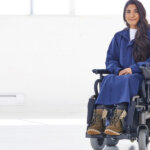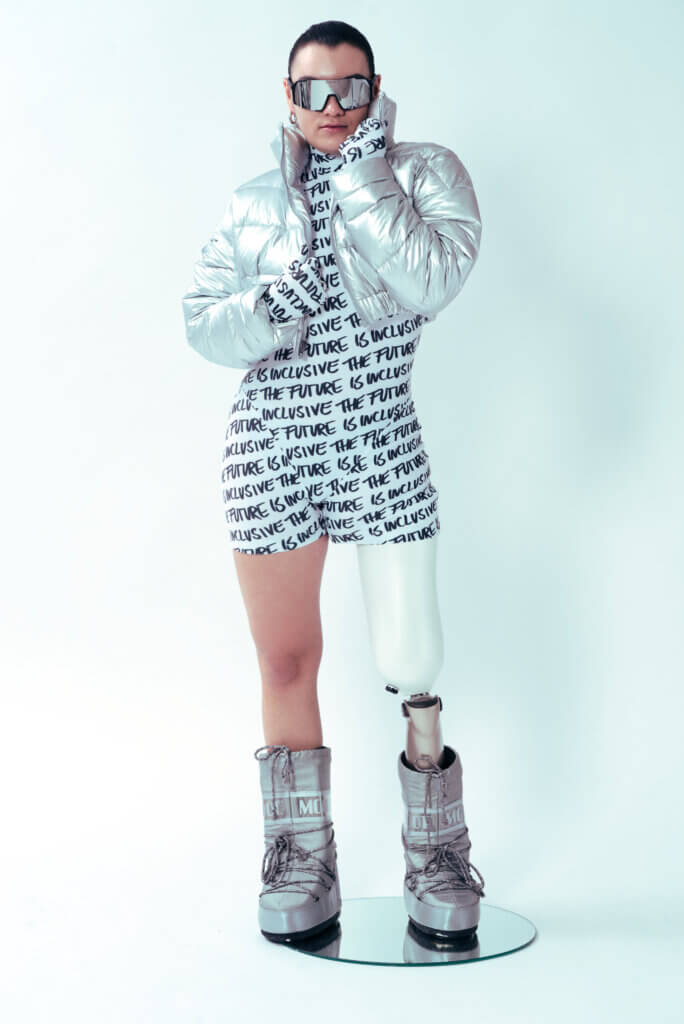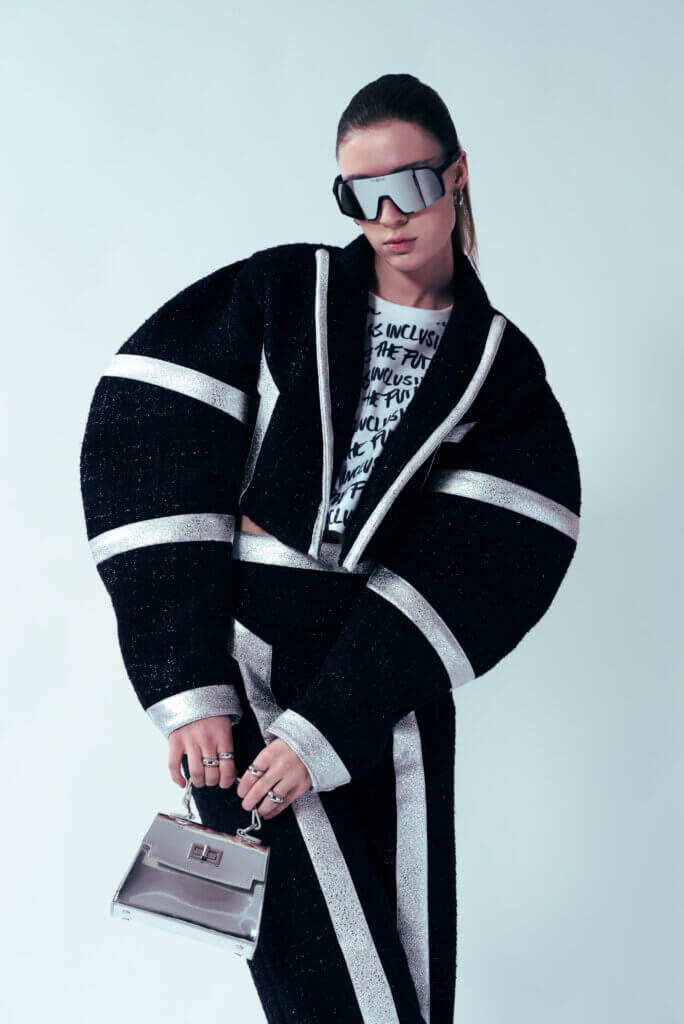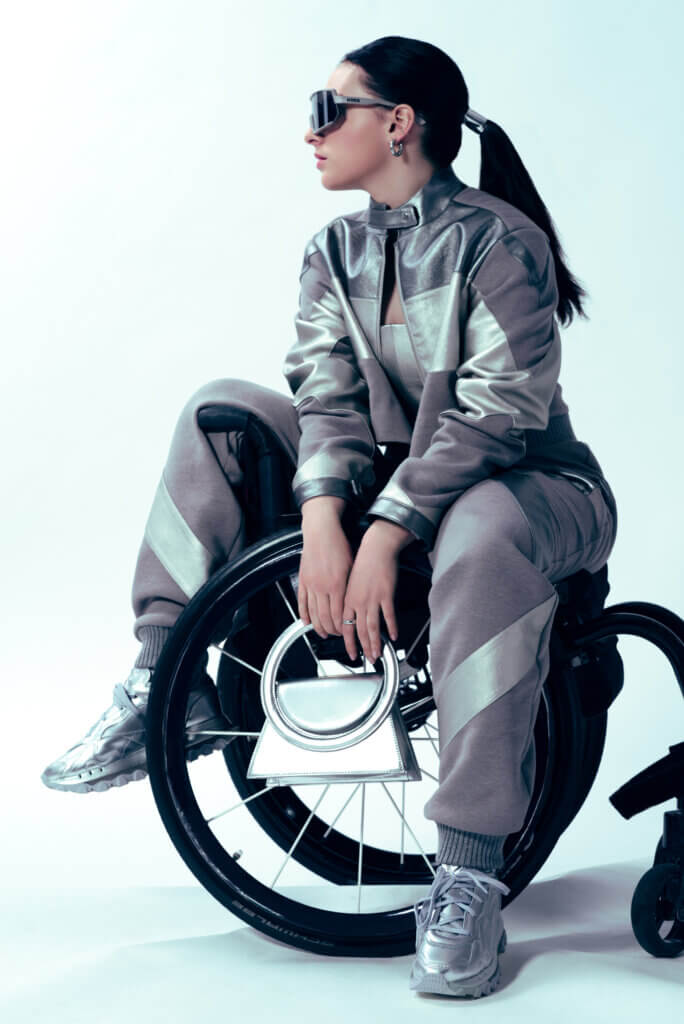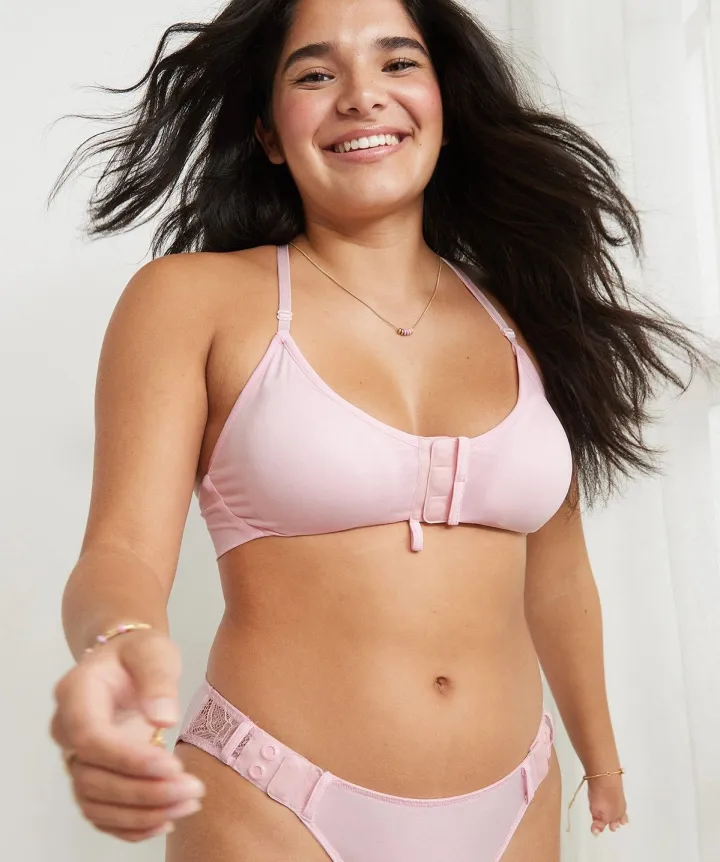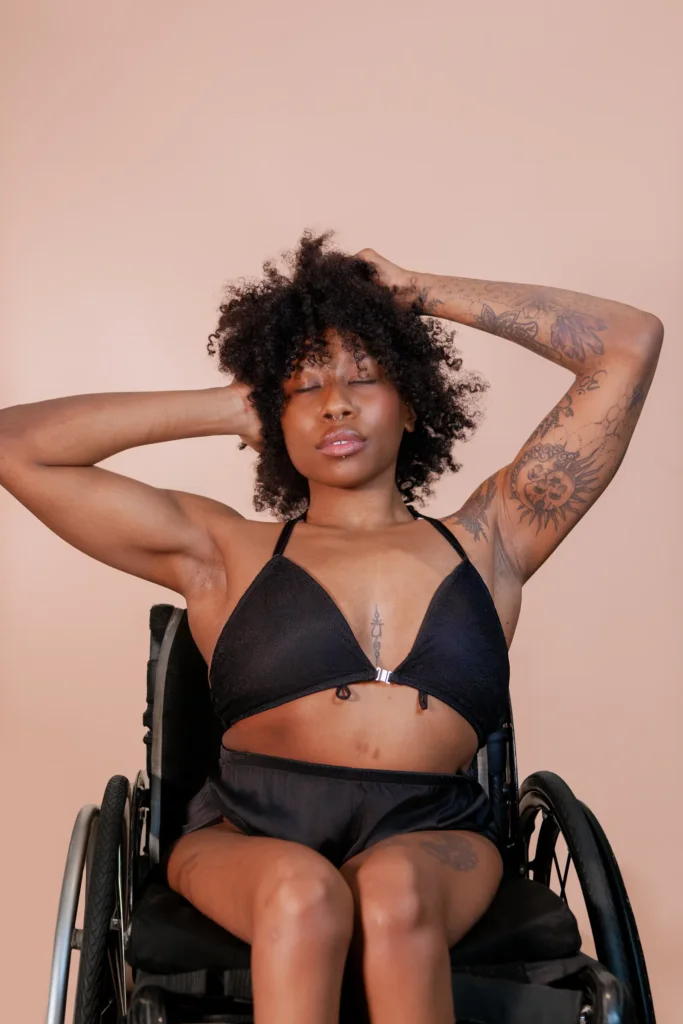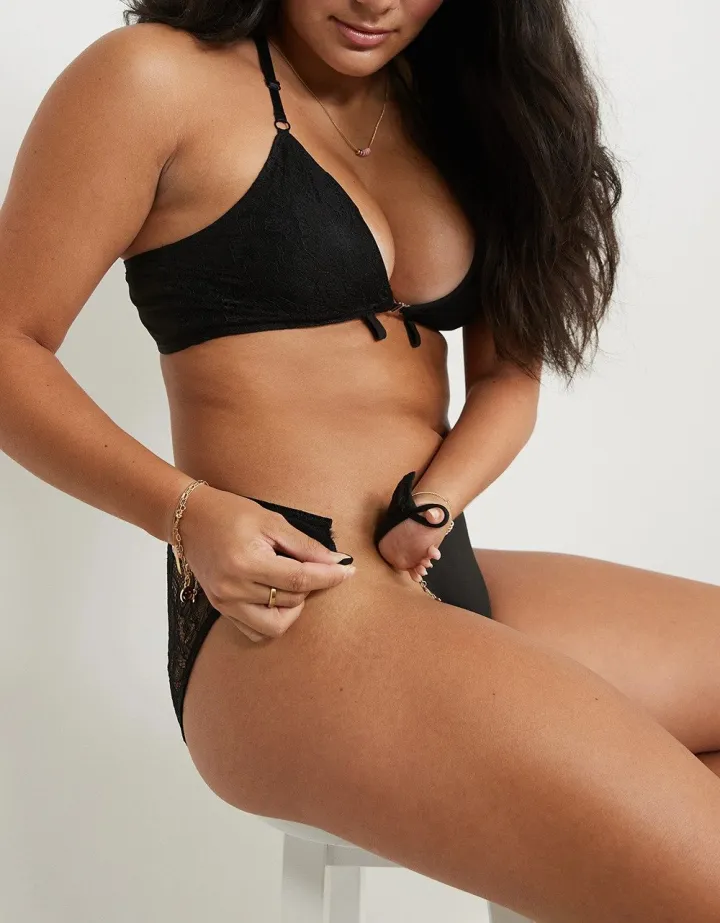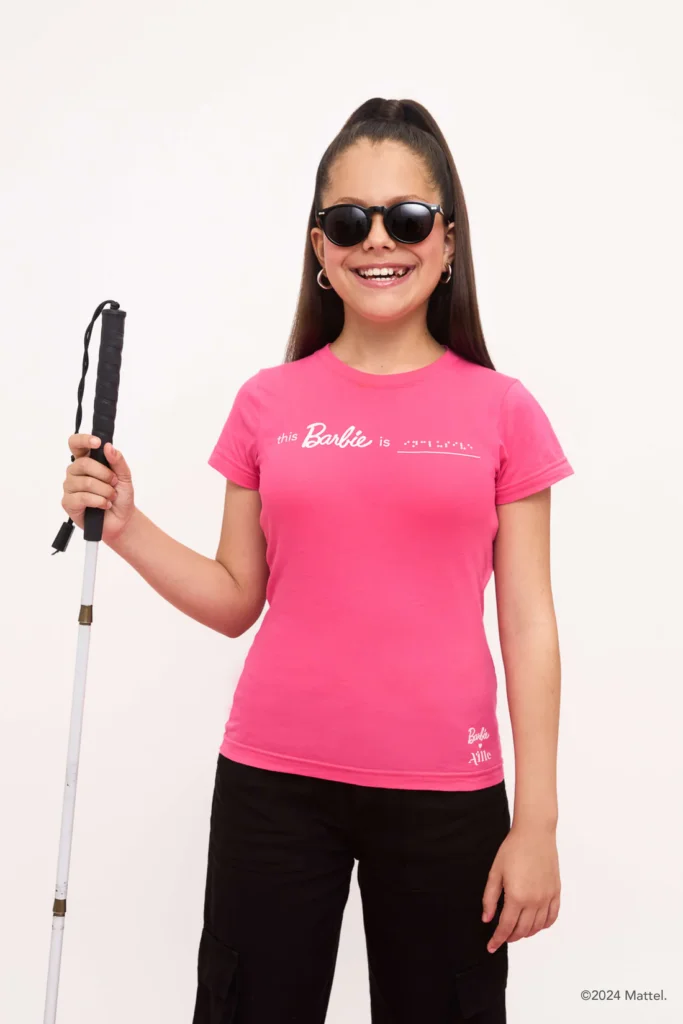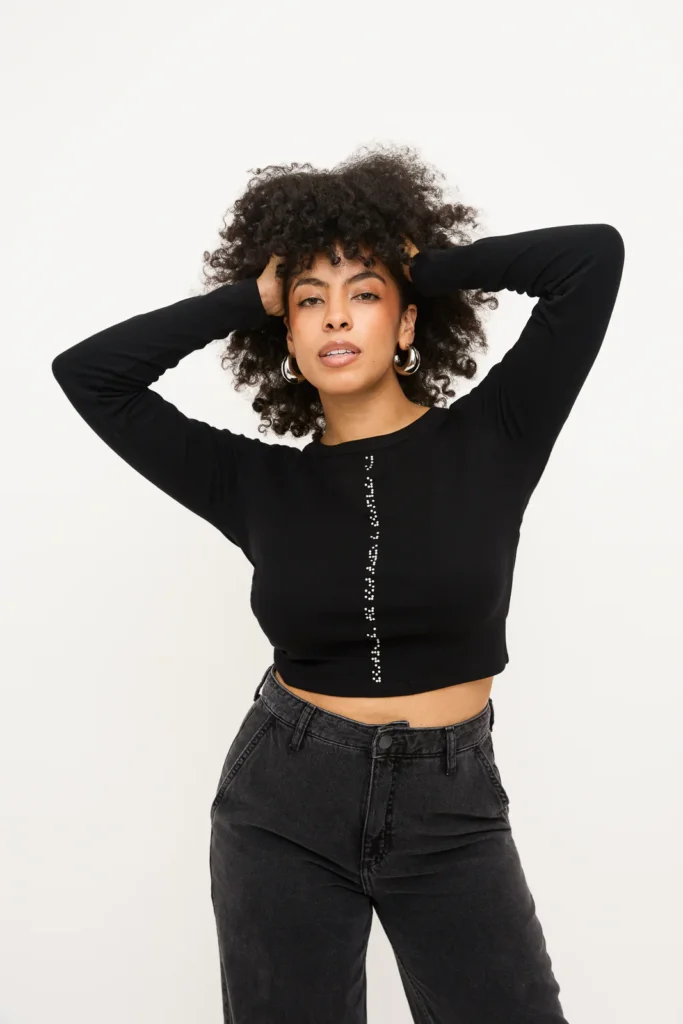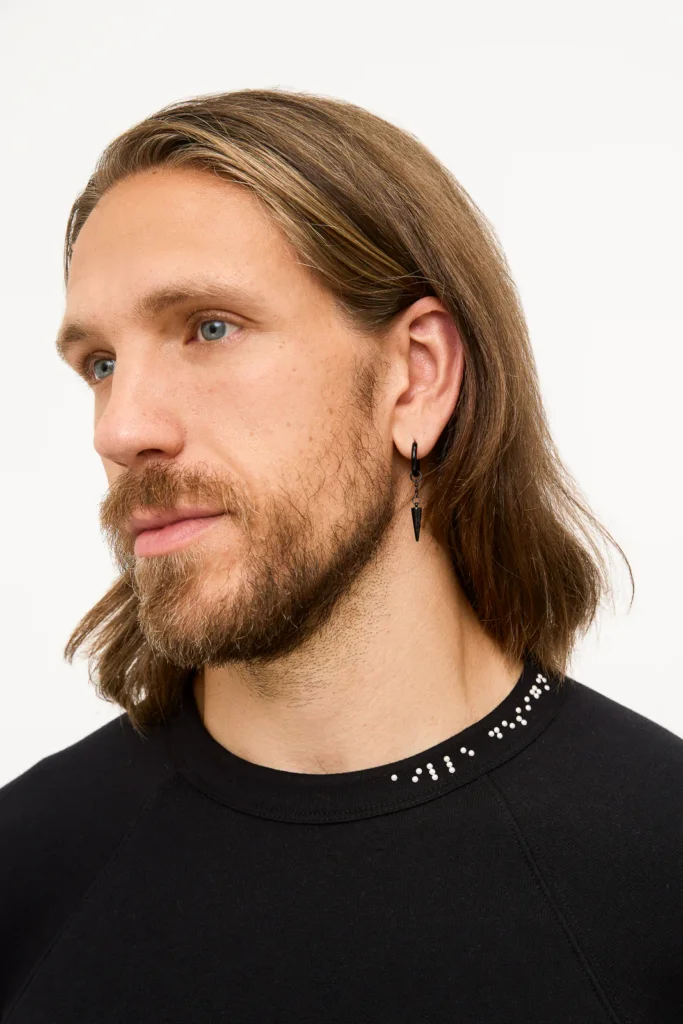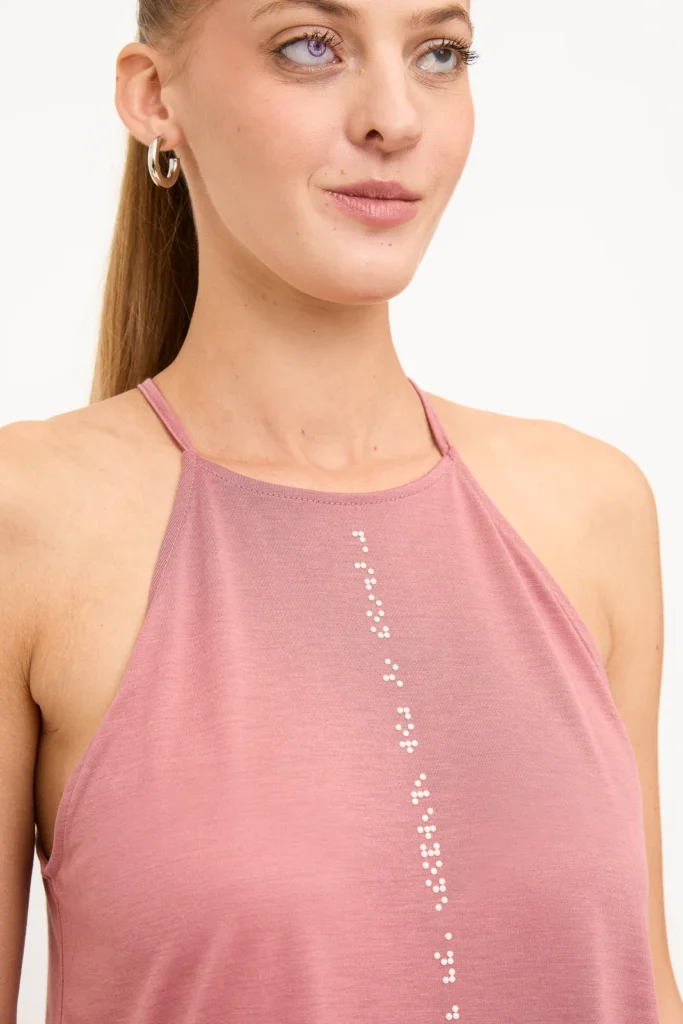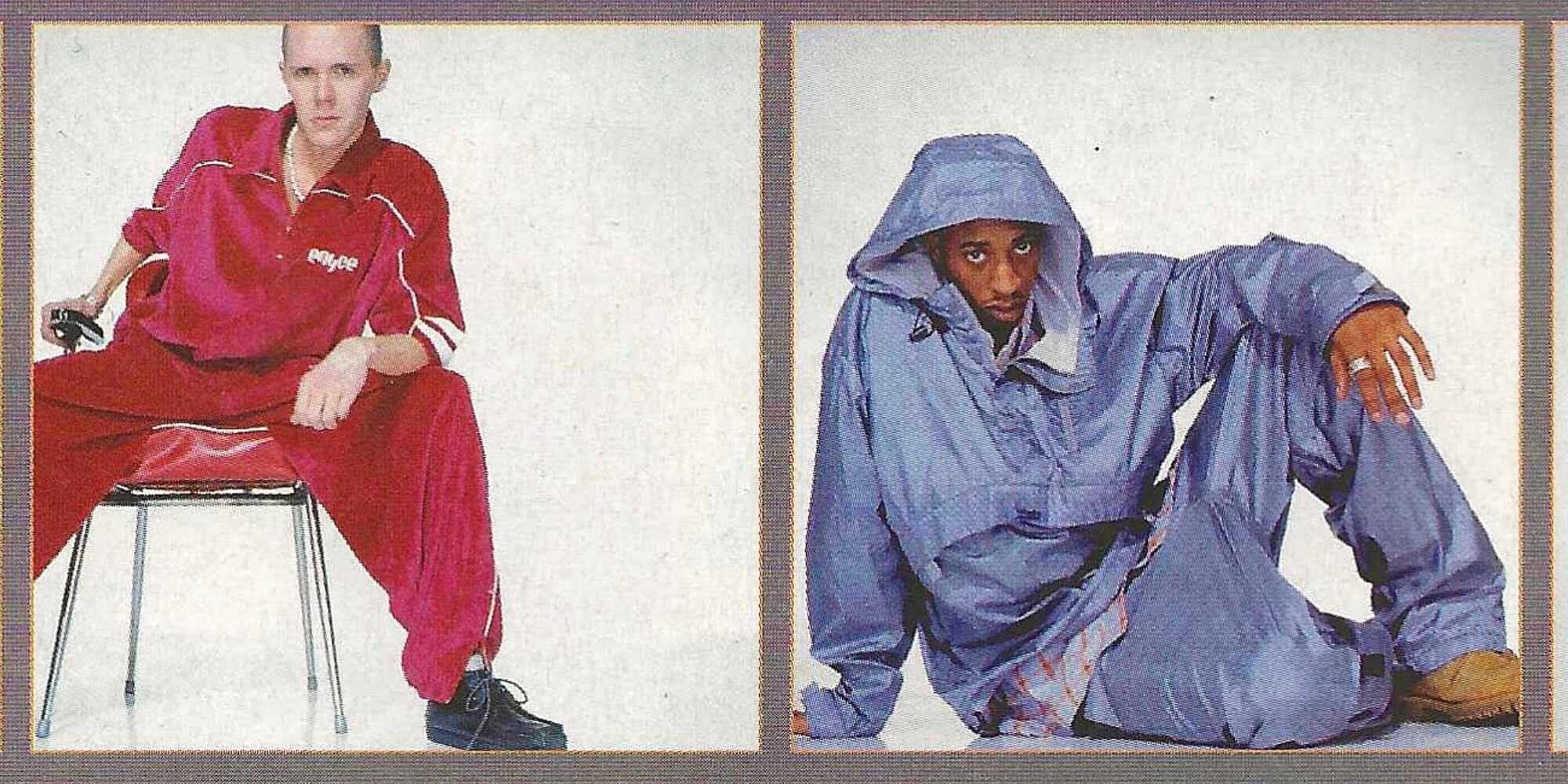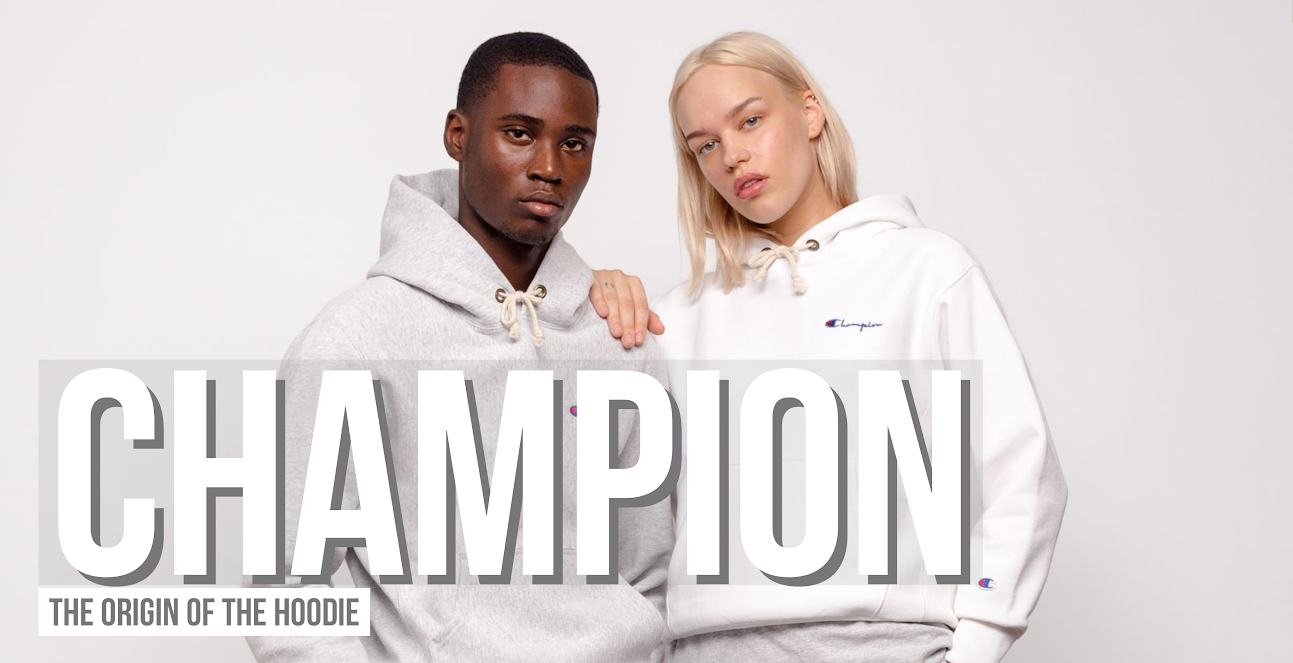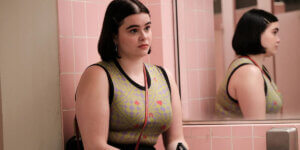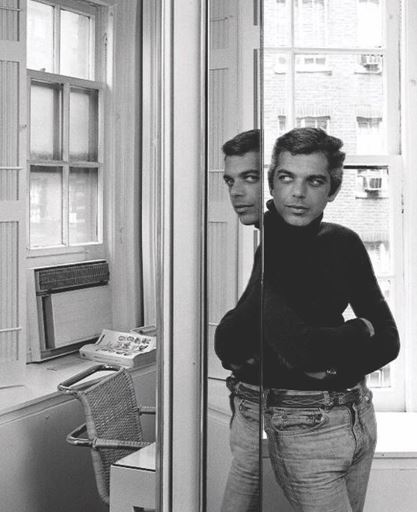This year’s second edition of New York Fashion Week hosted cornerstone American brands like Thom Browne, Ralph Lauren, and Michael Kors, who presented their Spring/Summer 26 collections alongside rising designers such as Collina Strada, Peter Do, and Private Policy. NYF also hosted the 11th Annual Fashion Revolution Runway Show, organized by the non-profit organization Runway of Dreams. Since 2017, they’ve been rethinking the runway with global adaptive fashion shows, celebrating people’s differences, creating visibility, and empowering disabled people through fashion.
Last year’s edition was hosted by Canadian actress Madison Tevlin and featured model Aariana Philip Taylor, who amongst many other successes made history by being the first Black trans disabled model to be included in a Met fashion exhibit. Aariana has always been very outspoken about her path in the fashion industry. On Instagram she writes: “[…] I’m incredibly grateful for it all. And yet, in New York City I’ve walked the runway for just three brands – only one of which works with me consistently. I’ve yet to do runways in London, Milan or Paris. I often attend events where I’m welcomed as what feels like a sort of live decoration – praised at parties, but passed over when it comes to meaningful opportunities. There’s a disheartening irony in being featured in an exhibit in the Met and still struggling to access consistent support and visibility as a working model in this industry.”
From a lack of inclusion on the runways to the brands themselves, the fashion industry has always struggled with true inclusivity and accessibility. Some brands, like Tommy Hilfiger, ASOS, or Zalando, may have recognized the spending power of the disabled population, but often fail to properly include disabled people in the conception of the clothes designed for them. Adaptive pieces are sent into production without having been tried on their target clientele, which results in a lack of functionality in the clothes, or aren’t made accessible to the disabled community, like Nike’s Go FlyEase, which was marketed as an ‘accessible solution’. Instead, they were picked up by resellers due to the shoe’s limited release.
Going back in history, we can see that adaptive fashion started to be thoroughly researched in the 1950s by Helen Cookman and Virginia Pope. During this time, Cookman developed ‘Functional Fashions’, a collection of seventeen designs to help disabled people dress independently, featuring elements such as double fabric underarms to withstand wear from crutches, full-length side seam zippers on trousers, or Velcro fastening. Together with Muriel E. Zimmerman, Cookman published an illustrated guide with information for disabled consumers and designers in 1961. However, after both she and Pope had passed away by 1978, adaptive fashion shifted away from its ‘fashion’ emphasis towards functionality.
Luckily, the last two decades have seen the growth of adaptive fashion brands that truly center their customers’ needs and preferences; some created by disabled people or their relatives, turning personal challenges into design, with many of them women-owned. Here is a mix of more established brands and smaller businesses that have caught our eye.
IZ Adaptive
Launched in 2009 by fashion designer Izzy Camilleri, IZ Adaptive broke ground by being the first retailer to target a younger demographic of disabled people.

Camilleri first set foot in the world of accessible clothing through a custom job for a wheelchair user in 2004, which opened her eyes to the huge necessity of this type of clothing. She started with a line of wardrobe basics and has kept evolving the brand ever since then. One of the most important pieces Camilleri has developed is the Game Changer Pants, which use IZ Seamless Technology to reduce the risk of developing life-threatening pressure sores for seated customers. With its functional and stylish pieces, IZ Adaptive pioneers the adaptive clothing industry and has earned recognition from museums, educational institutions, and media outlets such as Vanity Fair and Vogue Business.

Ann-Sophie Schaelicke
Ann-Sophie Schaelicke is a Germany-based fashion designer who, living with a disability, has turned her personal experiences and challenges into a mission to break barriers and create inclusive fashion for all abilities. “I believe in the transformative power of fashion”, she says. “It can create visibility, foster inclusion, challenge outdated norms, and most importantly, give the wearer a powerful boost in confidence. That impact is the driving force behind my work.” Schaelicke combines real-world insights with a sleek and modern reimagination of fashion heritage, creating both innovative and aesthetic designs that continuously redefine the visual language of adaptive fashion. One of the pieces particularly dear to the designer is an adaptive trench coat tailored for both seated and standing wear. For Ayleen Walter, a Berlin-based model and advocate for the disabled community who has become Schaelicke’s muse over the years, the trench coat means a lot.
In an interview with The Berlin Fashion Hub and Zalando, she explains: “I’m really emotional about this trench coat, because I loved wearing trench coats before, and when I was using a wheelchair, this wasn’t an option for me anymore because they were so ill-fitting. This trench coat has some very specific and special features, my favorite one being the convertible length of the back, which makes it suitable for both sitting and standing.” Another one of the label’s highlights is the SPOTLIGHT collection, which explores a futuristic vision of inclusive fashion through Space Age aesthetics, bold typographic prints, magnetic fastenings, and sculptural silhouettes. Schaelicke visualizes a bold and expressive future for adaptive fashion, one that challenges outdated stereotypes of disability and unites style, individuality, and inclusion. “Fashion has the power to shift perceptions and adaptive design plays a key role in that,” she states. “The industry needs to move beyond performative inclusion and start taking accessibility seriously at every level. Real change means building it into the foundations of design, production and representation. Inclusion can’t be treated like a trend. It needs to be a lasting, structural commitment.”
Liberare
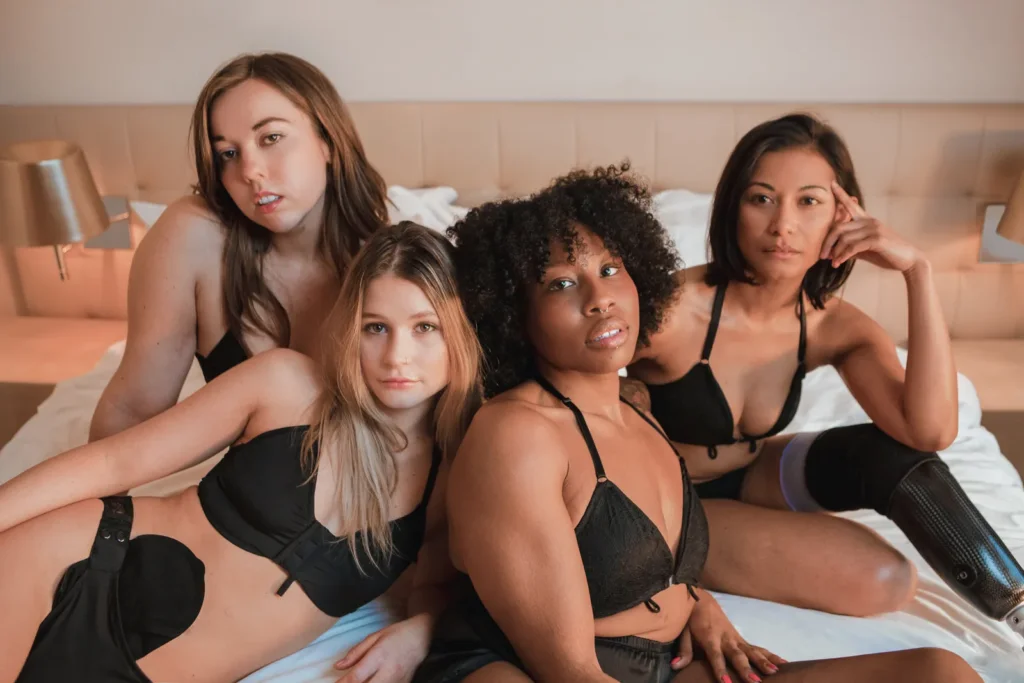
The adaptive fashion brand Liberare is on a mission to enable all women to dress independently by developing functional and chic underwear. Emma Butler, the brand’s CEO and founder, started the project after watching her mother struggle to find comfortable, easy-on bras. In an interview with British Vogue, Butler says: “She previously had a beautiful collection of lingerie, but, since her dexterity and mobility completely changed in her 40s, her only lingerie options became medical and quite ugly looking. I watched her confidence plummet.”
Run by an all-female team of different abilities, Liberare knows their audience and came up with the unique HeroHold Closure for their bras and bralettes. The front closure is composed of a magnetic glide and a three-way interlocking latch that holds the bra in place securely and comfortably. Customer Doris S. writes on the Liberare website: “As a 57-year-old who has tried every front-opening bra on the market at this point, I have to say this is the winner. I’ve suffered with fibromyalgia for years and find most bras – even wireless ones – too tight or difficult to get on. Really glad I found this brand.” For their briefs, Liberare has created side-opening knickers that allow wheelchair users or people with limited shoulder mobility to slide them on beneath their garments. In the future, Butler and her team would like to license their technology to bigger brands and hope to see adaptive lines in every brand. Butler concludes: “We can send a man to the moon, so why has a bra not been redesigned in 100 years?”
Aille Design
Aille Design founder Alexa Jovanovic first began her research on braille and inclusive design when she went to study fashion at Ryerson University. The budding designer realized that Braille fashion didn’t exist yet and couldn’t find any studies on disabled consumers of fashion, so she started building strong relationships with local blind and visually impaired individuals, discussing their shopping habits, clothing trends, or society’s misconceptions of what it means to “look” blind. Inspired by the beads on a jacket, Jovanovic visualized beads that would communicate the item’s color, textile, wash instructions, and empowering messages through Braille. “My philosophy at Aille Design is ‘good design shouldn’t exclude anyone,’ which is why we work directly with blind, visually impaired, and sighted communities every step of the way to ensure our products appeal to a wide audience”, she writes in a press statement.
Made from Swarovski pearls, the Braille on Aille Design clothes aims to change perception towards blindness and disability and present Braille as the fashionable element it can be. The first Braille prototype the label created was a white collar shirt with black braille beadwork, and since then, they have collaborated with Barbie, the NBA Cleveland Charge, or dressed visually impaired actor Haydon Zaller and his mother in custom Braille clothing for his red carpet premiere. Jovanovic is excited about the future of the brand. “As we move forward with the help of industry leaders and support from blind and visually impaired communities, Aille Design can cater to a whole new market of fashion lovers, and together, we can help eliminate stigmas surrounding braille use and blindness.”
Rebirth Garments
Sky Cubacub, a Filipinx American disabled non-binary person, started seeking out gender affirming garments early on in their life, but due to their disabilities, they also required adaptive clothing and realized how difficult it was to find a combination of the two. After making a garment for a cousin, Cubacub was encouraged to start a fashion brand by a relative and realized that they wanted to make inclusive clothing for everyone with queer and disabled identities. In the summer of 2014 they started Rebirth Garments, which sells custom made wearables and accessories centering non-binary, trans and disabled queers of all sizes and ages. At the center of the label is the notion of Radical Visibility, a movement celebrating queer and disabled bodies through the use of bright colors, exuberant fabrics and innovative designs, refusing assimilation.
Cubacub writes in their Queercrip Dress Reform Movement Manifesto that: “Disabled and trans people have specific clothing needs that aren’t adequately served by mainstream designers. […] Rebirth Garments challenges mainstream beauty standards, sizeism/ableist notions, and the gender binary. Clothing is your second skin; it changes the way you hold yourself.
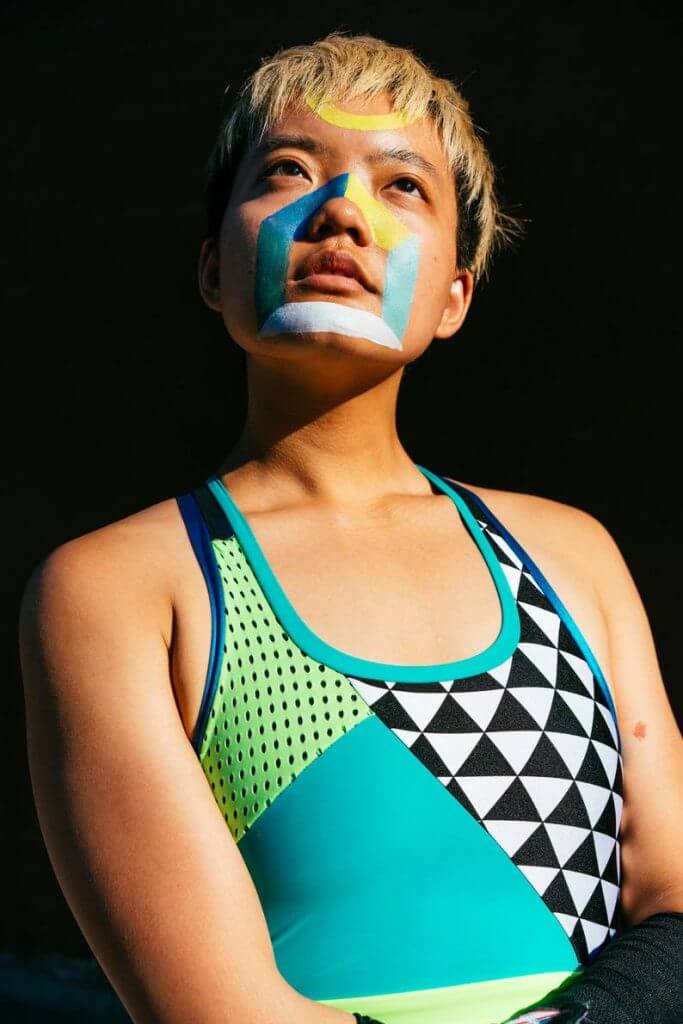
I consider it armor because it has the power to give you the confidence and strength to feel comfortable in your first skin.” Apart from fashion, the label has an educational division called Rebirth Warriors, which offers lectures and workshops for adults and children. Rebirth Garments stands strongly for Palestinian liberation and is selling watermelon-themed items that support Seraj, a student from Gaza who has been forcibly displaced in the camps in Khan Yunis and Nara, a disabled mother and writer with her children. Cubacub writes: “Of course, one clothing line alone cannot destroy societal oppression […]” but Rebirth Garments is a great example of how to use fashion to create a movement that generates change and works towards freedom.








